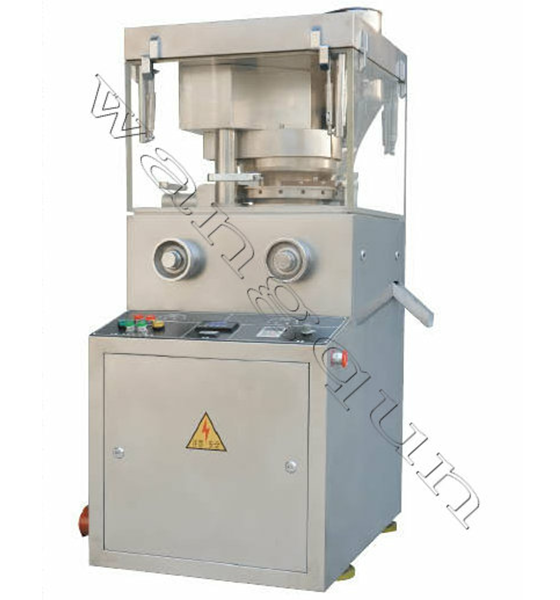Disinfection Tablet Press Inspection Checklist for Operators
Introduction
Disinfection tablets are essential for maintaining hygiene and preventing the spread of pathogens in various environments. The Tablet Press Machine used in their production must operate efficiently and safely to ensure high-quality output. Operators must follow a structured inspection checklist before, during, and after production to minimize errors, prevent contamination, and maintain equipment longevity.
This checklist provides a comprehensive guide for operators to verify machine conditions, material handling, safety protocols, and final product quality.
---
1. Pre-Operation Inspection
1.1 Machine Setup & Calibration
- [ ] Verify that the tablet press is clean and free from previous product residues.
- [ ] Check that all machine guards and safety interlocks are functional.
- [ ] Ensure the compression rollers, punches, and dies are correctly installed and aligned.
- [ ] Calibrate the tablet weight and hardness settings according to specifications.
- [ ] Confirm that the lubrication system is working properly (if applicable).
1.2 Material Preparation
- [ ] Inspect raw materials (powder/granules) for correct batch number, expiry date, and proper storage conditions.
- [ ] Ensure the material hopper is clean and free from foreign particles.
- [ ] Verify that the powder blend is uniform and free from lumps or segregation.
1.3 Safety Checks
- [ ] Ensure emergency stop buttons are accessible and functional.
- [ ] Check that PPE (gloves, goggles, masks) is available and worn correctly.
- [ ] Confirm that ventilation and dust extraction systems are operational.
---
2. During Operation Inspection
2.1 Machine Performance Monitoring
- [ ] Monitor tablet weight consistency using periodic sampling (every 15-30 minutes).
- [ ] Check tablet hardness and thickness to ensure uniformity.
- [ ] Observe compression force to detect any abnormal fluctuations.
- [ ] Listen for unusual noises (grinding, knocking) that may indicate mechanical issues.
2.2 Material Flow & Feeding System
- [ ] Ensure the powder/granule feed is consistent without blockages.
- [ ] Verify that the feed frame is distributing material evenly across the die table.
- [ ] Check for excessive dust generation, which may indicate poor granulation or feed issues.
2.3 Tablet Quality Control
- [ ] Inspect tablets for defects (capping, sticking, chipping, or discoloration).
- [ ] Perform disintegration tests on random samples (if required).
- [ ] Record any deviations from standard tablet specifications.
2.4 Safety & Housekeeping
- [ ] Ensure no loose tools or debris are near moving parts.
- [ ] Keep the workspace clean to prevent cross-contamination.
- [ ] Monitor operator fatigue and enforce breaks if necessary.
---
3. Post-Operation Inspection
3.1 Machine Shutdown & Cleaning
- [ ] Follow proper shutdown procedures to avoid mechanical stress.
- [ ] Remove and clean punches, dies, and compression rollers.
- [ ] Clear residual powder from the hopper, feed frame, and tablet discharge chute.
- [ ] Sanitize contact surfaces to prevent microbial contamination.
3.2 Maintenance & Documentation
- [ ] Record any wear and tear on tooling (punches, dies) for replacement scheduling.
- [ ] Log machine performance issues and corrective actions taken.
- [ ] Update batch records with production data (tablet count, rejects, downtime).
3.3 Final Safety Check
- [ ] Ensure all power sources are turned off after shutdown.
- [ ] Store cleaning agents and tools properly.
- [ ] Verify that waste materials are disposed of according to regulations.
---
4. Troubleshooting Common Issues
| Issue | Possible Cause | Corrective Action |
|-----------|--------------------|-----------------------|
| Capping/Lamination | Excessive compression force, poor granulation | Adjust compression force, check granule moisture |
| Sticking to Punches | Improper lubrication, high moisture | Clean and polish punches, adjust formulation |
| Weight Variation | Uneven feed, worn tooling | Check feed system, replace worn dies/punches |
| Chipped Tablets | Brittle granules, misaligned punches | Optimize granule strength, realign tooling |
---
Conclusion
A thorough inspection of the disinfection tablet press ensures consistent product quality, operational safety, and equipment longevity. Operators must diligently follow this checklist to prevent defects, minimize downtime, and comply with hygiene standards. Regular training and adherence to best practices will enhance efficiency and reduce production risks.
By implementing this structured approach, manufacturers can maintain high standards in disinfection tablet production while ensuring operator safety and regulatory compliance.
(Word Count: ~2000)











 Téléphone
Téléphone
Commentaire
(0)